
The Art of Product Discovery: A Guide for Product Managers
The rapidly evolving market landscape and ever-changing consumer needs make product management a challenging arena. The key to creating a successful product that resonates with users and withstands market dynamics lies in mastering the art of product discovery. But what does 'Product Discovery' indeed mean, and why is it paramount to the role of a product manager?
Through this guide, we aim to shed light on the various product discovery methods, each with its unique advantages and challenges. We'll also share practical tips, tools, and best practices to conduct effective product discovery, ensuring you're well-equipped to navigate this crucial aspect of product development.
Whether you're a seasoned product manager seeking to refine your discovery process or a newcomer eager to understand the nuts and bolts of product discovery, this guide is for you. In this blog, we will delve into product discovery, its importance in product management, the phases of the product discovery process, and methods and tools to conduct product discovery effectively.
What is Product Discovery?
Product discovery is a crucial phase in the product development process where the aim is to understand user needs, business goals, and market dynamics before building a product or a feature.
Product discovery is a process teams use to define and understand the problem they are trying to solve before building a solution. The goal of product discovery is to develop a deep understanding of the user's needs, the market context, and the business objectives to create a product that provides genuine value to users and aligns with the company's strategic goals.
This process often involves customer interviews, Jobs to be done framework surveys, market research, competitive analysis, prototyping, and user testing. By employing these methods, teams can validate assumptions, uncover user needs and preferences, and ensure they build the right product before investing significant time and resources in product development.
Product discovery is a crucial component of the product development lifecycle, helping to reduce risk and increase the chances of building a successful, user-centered product. It's an iterative process that can be repeated as new information is gathered or market conditions change, ensuring that the product remains relevant and valuable over time.
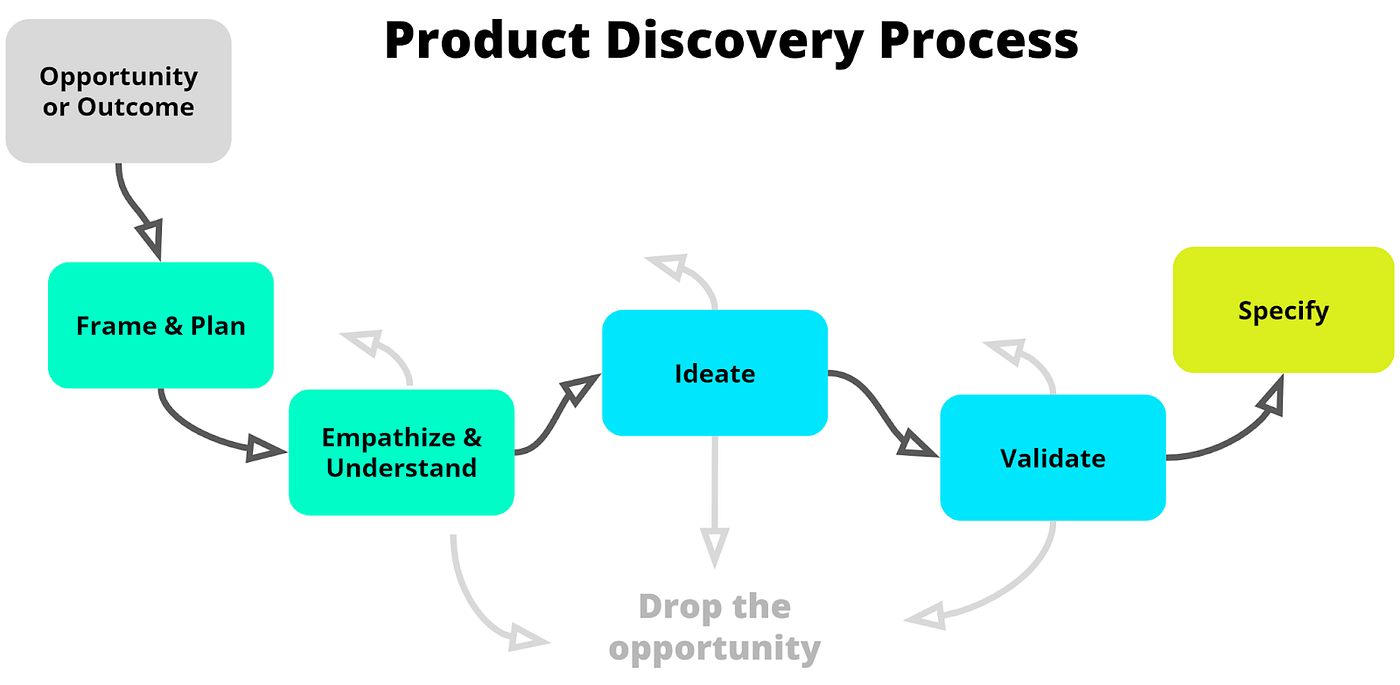
Why is Product Discovery Important for Product Teams?
Product discovery is essential for product teams for a number of reasons:
- Customer Centricity: It ensures the product or feature is designed to meet actual customer needs. By conducting user research and validation, product teams can ensure they're solving real problems for their users, increasing the chances of product success.
- Risk Reduction: It helps reduce the risk of building a product or feature that no one wants or needs. By testing assumptions early and frequently throughout the process, teams can pivot or adjust their plans based on user feedback and avoid costly mistakes.
- Resource Efficiency: It ensures resources are efficiently used. Building a product requires considerable investment in time, talent, and capital. Product discovery helps ensure these resources are allocated towards features that provide the most value.
- Strategic Alignment: Product discovery ensures alignment across cross-functional teams (design, engineering, marketing, etc.) towards a common understanding of the user's needs and the product vision with an internal feedback management tool.
- Market Fit: Through competitive analysis and market research, product discovery helps teams identify opportunities in the market and understand how their product can differentiate itself from competitors.
- Informed Decision-Making: The insights gained from user research, validation, and market analysis provide valuable data for decision-making throughout the product lifecycle.
In essence, product discovery acts as a kind of 'insurance' against building the wrong thing. It aligns the entire team around the user needs and business goals and ensures that what is built will provide value to both the user and the business.
What is the Product Discovery Process?
The Product Discovery process is a series of steps before the product development begins to validate product ideas and ensure that what is being built will be valuable and usable to the end users. This process aims to minimize the risks associated with developing a new product by understanding the market, the users, and their needs.
Here's a typical product discovery process:
1. Understanding User Needs and Problems: The process begins with identifying the problem the proposed product or feature aims to solve. This step involves understanding the user's needs and challenges, as well as the business goals the product will fulfill.
2. Market Research and User Research: In this step, the product team analyzes the market and conducts user research to gain insights into the users' behavior, needs, and expectations. The team may also study the competition and analyze trends affecting the product.
3. Idea Generation and Brainstorming Solutions: Based on the research findings, the internal team generates ideas for a potential solution. They brainstorm various features and components that would be part of the product and how they might meet user needs with an idea management platform.
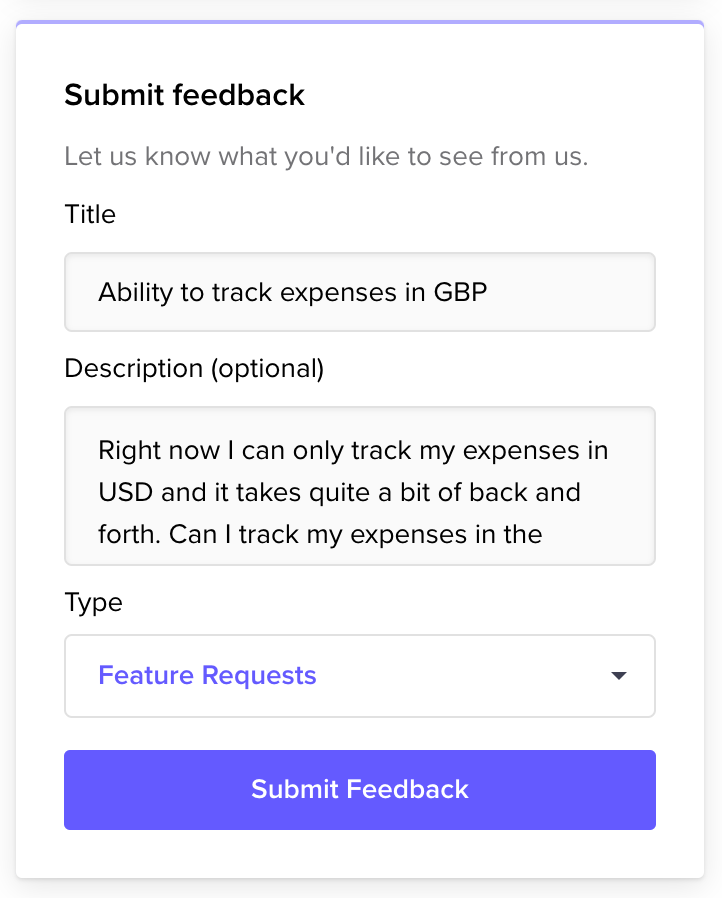
4. Creating User Personas and User Stories: User personas are developed to represent the target users of the product, while user stories describe the features from the perspective of the user. These help align the team and guide the design and development process.
5. Prototyping and Validation: The team creates a low-fidelity prototype of the solution and tests it with users to gather feedback. The aim is to validate whether the proposed solution meets users' needs and expectations.
6. Defining MVP (Minimum Viable Product): Based on the validation, the team decides on the minimum viable product – the product version with just enough features to satisfy early customers and provide early feedback for future product development.
Create a customer feedback page to get initial feedback. You can use user feedback tools like Rapidr to quickly collect valuable customer inputs on MVPs and turn them into a product roadmap that tests for viability automatically.
7. Iteration: The team iterates on the solution based on feedback, refining the concept before moving into development. Rapidr helps you track features, ideas, and suggestions on the customer feedback portal with various feedback boards. It helps you manage the entire feedback lifecycle, from capturing feature requests to prioritizing features and backlog tasks, informing the product roadmap, and sharing product updates with the release notes.
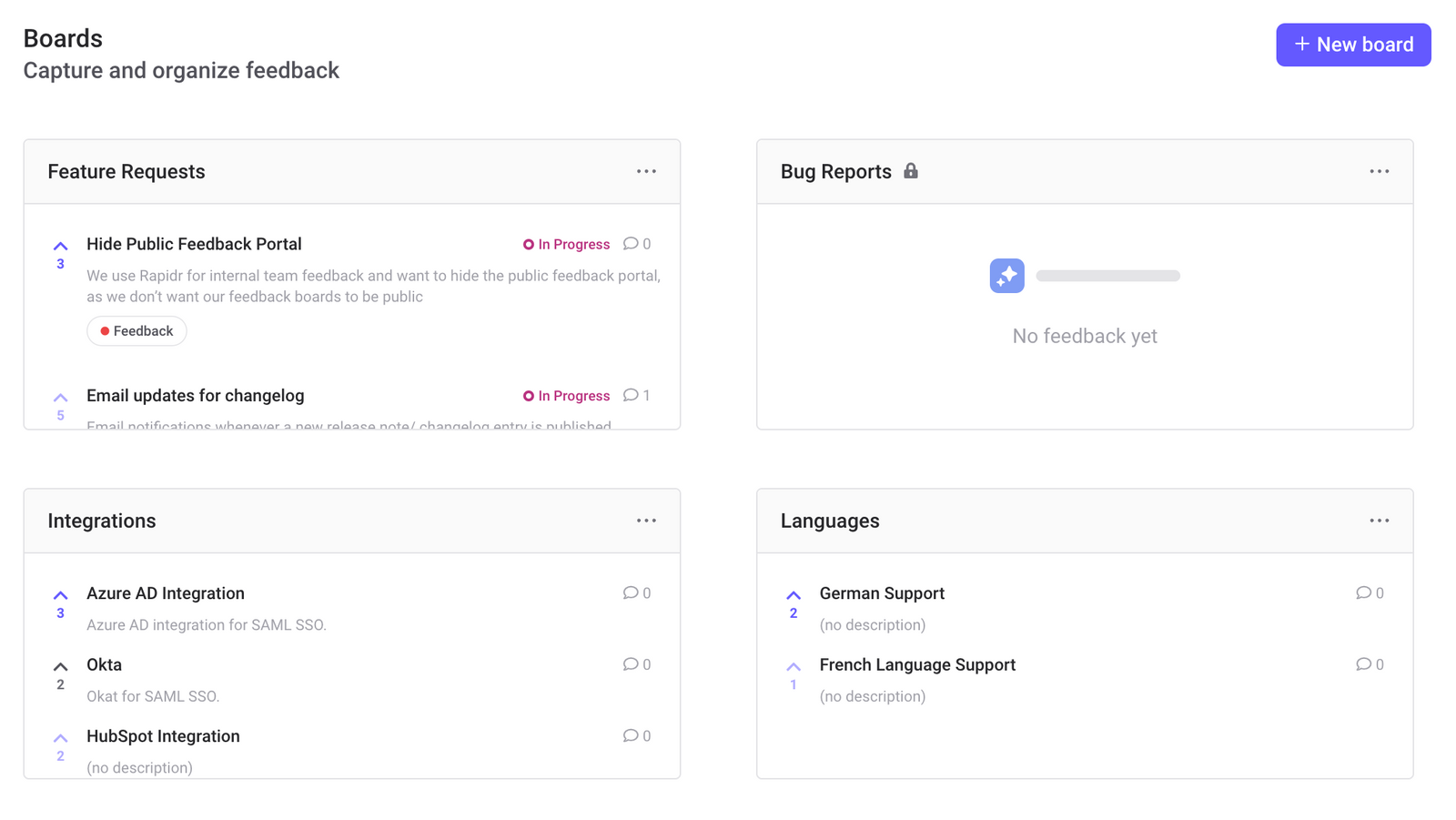
This process is repeated throughout the product's lifecycle as new features are proposed and developed. Product discovery ensures that product teams don't waste resources on ideas that won't meet user needs or business goals, reducing risk and increasing the likelihood of product success.
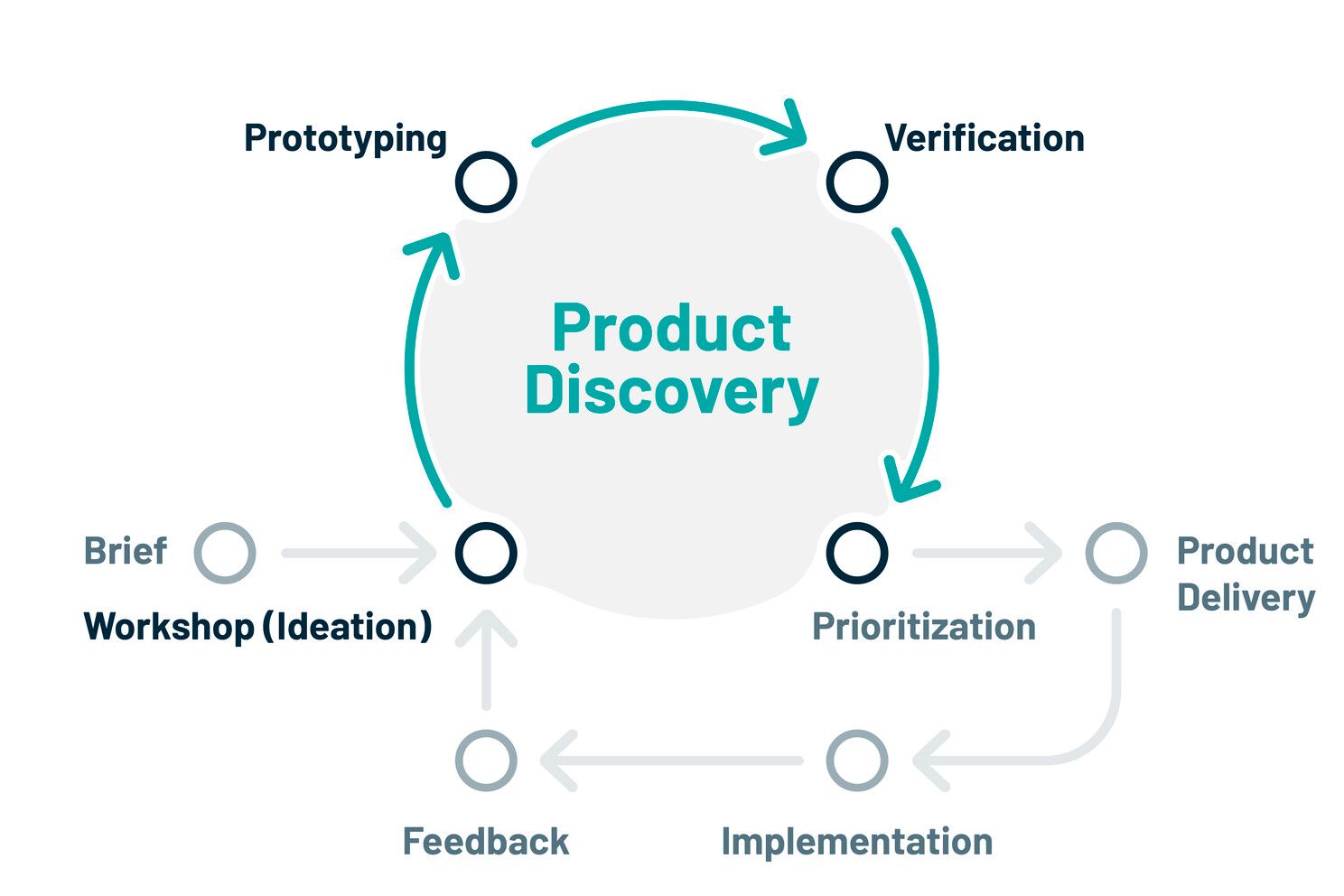
What are the various Product Discovery Methods and Techniques?
Product discovery is a process that helps teams identify and understand customers' needs and desires to build effective products. There are several methods and techniques employed for product discovery, including:
1.Customer Interviews
Customer interviews involve talking directly to your users or potential users to gain insights about their needs, desires, challenges, and behaviors. These interviews can be formal or informal and can be conducted in person, over the phone, or through video calls. Customer interviews in product discovery are essential for the following:
- Understanding Customer Needs: They help identify what customers want and their pain points, informing the design and features of products.
- Identifying Opportunities: They can reveal unmet needs or desires, indicating new avenues for product development.
- Collecting Product Feedback: Interviews provide firsthand feedback on your product, highlighting areas for improvement and successful features.
- Validating Assumptions: They can confirm or refute your assumptions about what customers want or how they use a product, ensuring alignment with actual customer behavior.
- Understanding Customer's Journey: They help map out the customer journey and the context of product use.
- Learning about the Market: They provide insights into the market, competition, and trends.
- Building Customer Relationships: Involving customers in product discovery can foster customer loyalty and engagement and drive product adoption
2. Customer Feedback
Customer feedback is an essential component of product discovery as it can provide actionable insights that drive product improvement and innovation. Here's how it contributes to product discovery:
- Identifying Pain Points and Needs: Customer feedback can highlight the problems customers are facing with your product or in their daily lives that your product can solve. This can guide you in improving your product or developing new features that address these needs.
- Product Improvement: By getting feedback, you can understand what works and what doesn't in your product. This can help in prioritizing features, improvements and identifying areas for enhancement.
- Validating Ideas and Assumptions: Customer feedback can help validate new product ideas or features before you fully invest in building them. It can also challenge or confirm assumptions you may have about user behavior or needs, reducing risks and avoiding costly mistakes.
- Customer-Centric Approach: Utilizing customer feedback keeps the product development process customer-centric. It ensures you are building a product that truly meets the needs and expectations of your users.
- Measuring Satisfaction: Customer feedback can help measure customer satisfaction and loyalty. It can provide insights into how your product is perceived, its strengths, and areas for improvement.
- Understanding Usage Patterns: Feedback often includes how customers use your product, enabling you to understand usage patterns and scenarios you might not have considered.
- Fostering Innovation: Sometimes, feedback can inspire new product ideas or innovative features you hadn't considered before.
To effectively use customer feedback in product discovery, it's important to establish reliable channels for collecting feedback (surveys, in-app feedback, interviews, usability tests, etc.), create a systematic approach for analyzing this feedback, and incorporate the insights into your product development process with a feedback management system.
Collecting and analyzing product feedback is an essential part of customer discovery. And more important is tracking it. But how do you track all your feedback on emails, spreadsheets, slack channels, intercom inboxes, and survey responses? Imagine how convenient it would be to direct all feedback to a centralized place. This is possible with Rapidr.
With Rapidr, you can also group similar feedback, announce your product releases to stakeholders, align everyone with the product roadmap, and avoid duplicates for better team discussion.
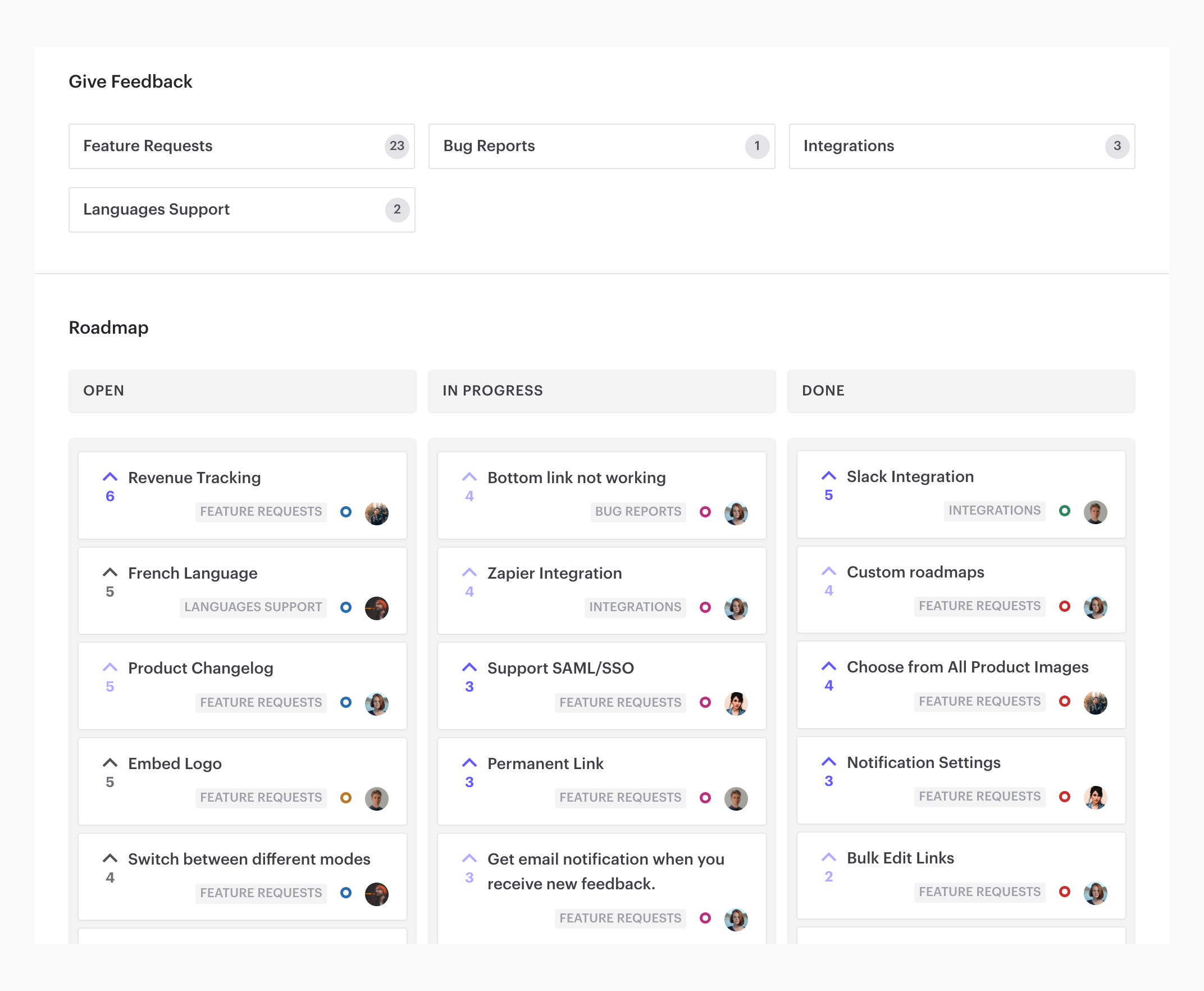
3. User Testing
User testing is an integral part of product discovery as it provides real-world insights into how users interact with your product. By observing users as they interact with your product in a controlled environment with beta testing, you can gain a deeper understanding of their behaviors, preferences, and difficulties and how they interact with it, identify usability issues, and gather feedback.
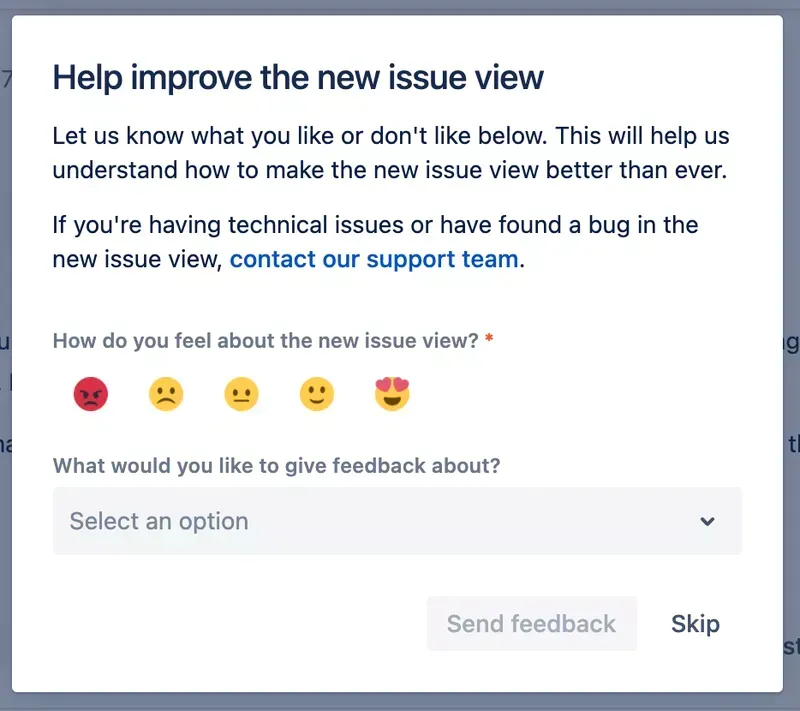
User testing can be done with prototypes, existing products, or competitors' products. This can reveal usability issues, design flaws, or confusing elements that might not have been apparent without this direct observation.
Additionally, user testing often involves gathering feedback directly from users about their experiences and perceptions of the product. This can provide valuable insights into what users value about your product and what they believe could be improved. The insights from user testing can help to refine the product, prioritize features, improve user satisfaction, and ultimately reduce the risk of product failure.
4. Competitor Analysis
Competitor analysis plays a crucial role in product discovery by helping organizations identify gaps in the market, understand industry standards, and determine unique value propositions.
Through studying direct and indirect competitors, companies can gain insights into successful product features, marketing strategies, and customer experiences already established in the market. This can offer valuable lessons and benchmarks for what works and doesn't in a given context. It can also expose oversaturated aspects of the market, enabling the identification of unique opportunities and niches.
Moreover, competitor analysis can help in predicting future market trends and shifts. By tracking competitors' updates, releases, and innovations, businesses can anticipate industry changes and stay ahead of the curve.
It provides a broader understanding of the market landscape, including potential threats and areas of competitive advantage. This context informs the creation or refinement of products that not only meet customer needs but also stand out from the competition in meaningful ways.
5. Customer Surveys and Questionnaires
It helps gather quantitative data from many users or potential users. Surveys and questionnaires can be delivered in various ways, including email, websites, and social media.
Customer feedback surveys offer a systematic way to gather insights from many users. They allow you to collect quantitative data, such as the popularity of a feature or satisfaction rates, and qualitative data, like open-ended responses to specific questions. This can reveal patterns, preferences, and pain points that might not be immediately apparent.
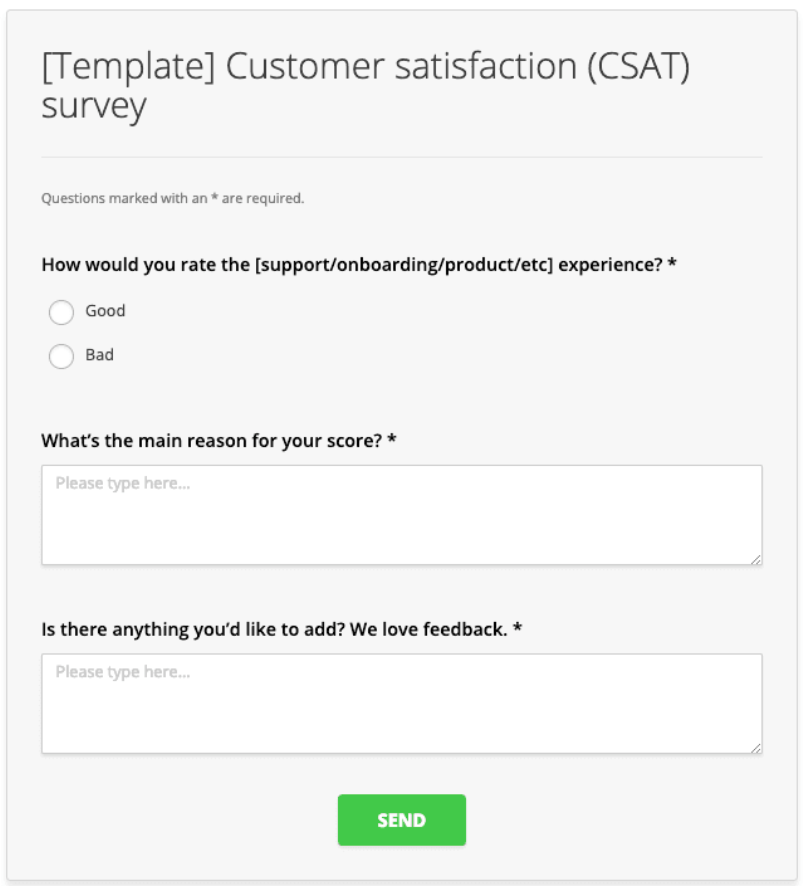
Surveys and questionnaires can help you understand your customers’ needs, expectations, and experiences with your product, as well as identify areas for improvement. They are especially useful when you want to validate assumptions, test hypotheses, or gauge user reaction to potential new features.
By effectively utilizing surveys and questionnaires, businesses can make data-driven decisions and ensure that the product direction aligns with user needs and wants, thereby enhancing the success rate of the product.
6. User Journey Mapping
User Journey Mapping involves creating a visual representation of the user's journey with your product, from the first interaction to the last. This can help you understand the user's perspective, identify pain points, and uncover opportunities for improvement.
By mapping out the user's journey, you can identify areas where users may encounter difficulties, become frustrated, or drop off. This insight can help you prioritize product improvements, develop new features, or rethink certain aspects of the product's design to improve the overall user experience.
Furthermore, it can reveal opportunities for delighting users at points where they might not expect it, enhancing user satisfaction and loyalty. Therefore, User Journey Mapping fosters a customer-centric approach to product discovery, ensuring that the product is designed and developed with a clear understanding of its users' needs, behavior, and experiences.
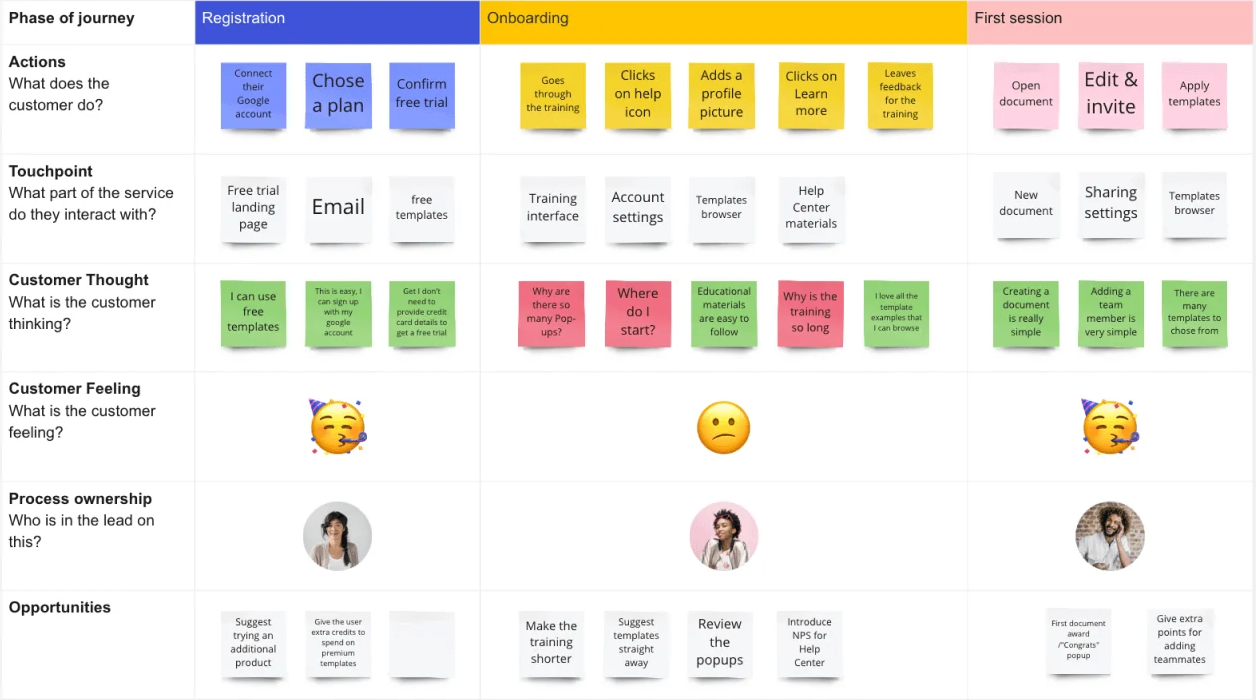
7. Product Analytics
Product analytics provides factual, quantifiable data about user behavior. This includes what features users interact with the most, the paths they take through the product, where they encounter difficulties or drop-offs, and more. This data can help identify user experience pain points and highlight improvement opportunities.
Secondly, analytics can also measure the impact of changes made to the product. If a new feature is added or changed, analytics can show how this impacts user behavior. This can help validate the effectiveness of changes and inform future iterations.
In addition, product analytics can provide insight into segments of users. It can reveal how different user groups interact with the product uniquely. This segmentation can be invaluable when prioritizing product developments and targeting specific user needs.
Product analytics offers a way to move beyond assumptions and make data-informed decisions during product discovery. It provides a deeper understanding of how users interact with the product, which is crucial for creating a product that meets user needs.
8. Social Media Monitoring
First, social media monitoring can provide real-time, unfiltered insights into how customers perceive your product and brand. Customers often share their experiences, thoughts, and opinions on social platforms. These conversations can reveal what customers think about your product, including their likes, dislikes, problems, and needs. This can inform product improvements and new feature ideas.
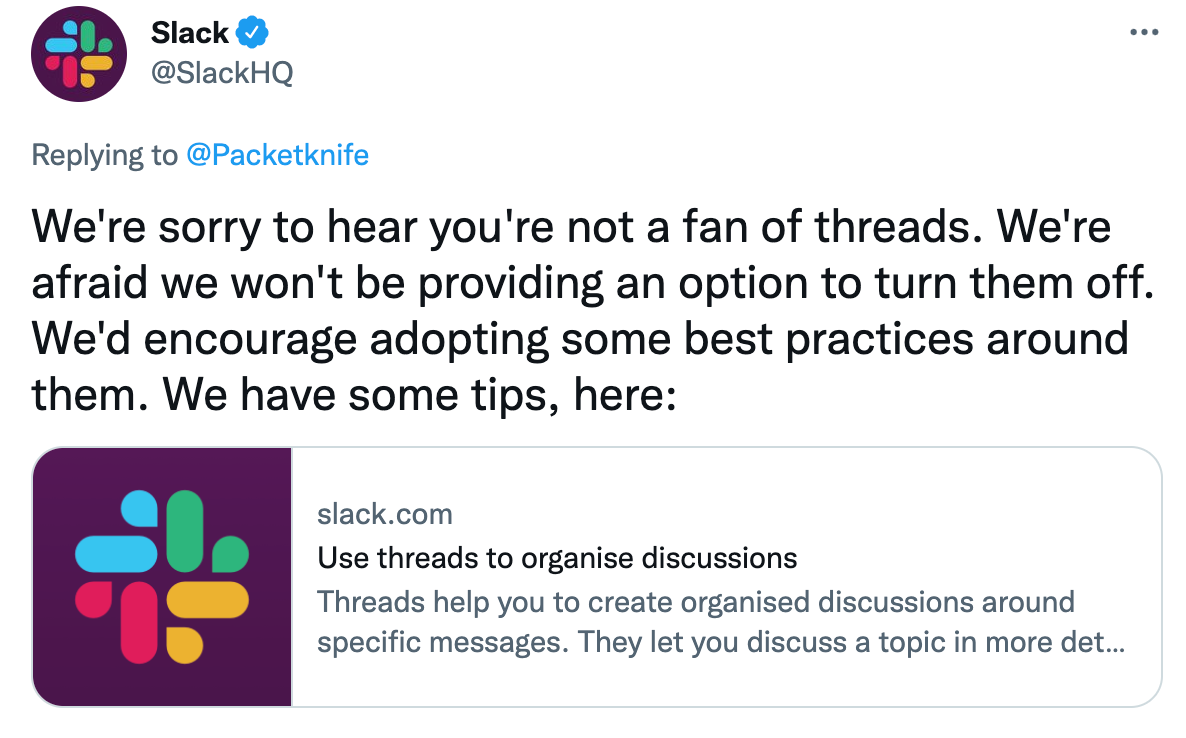
Second, social media monitoring can help you keep a pulse on industry trends and competitors. By monitoring relevant hashtags, competitor mentions, and industry conversations, you can gain insights into emerging trends, shifts in consumer preferences, and new competitive offerings. This can help you identify opportunities and threats early and adapt your product strategy accordingly.
According to State of Consumer Trends Report, 22% of consumers prefer to discover new products via social media.

Moreover, through social media monitoring, you can identify and engage with key influencers and advocates in your space. Influencers can help promote your product, provide feedback, or collaborate on product development. Advocates, on the other hand, are happy customers who can become case studies, provide testimonials, or participate in user research.
By integrating social media monitoring into your product discovery process, you can gain valuable insights to make more informed, customer-centric product decisions.
9. Prototyping and Concept Testing
Developing low-fidelity prototypes of your product and gathering user feedback allows you to test different ideas, identify potential issues, and validate your ideas and concepts before investing heavily in development. Here's how prototyping and concept testing assist in the product discovery process:
1. Validate Ideas: Prototyping allows you to create a visual or interactive model of your product or feature, which can be tested with users. This helps validate your ideas and assumptions before investing more time and resources in development. and make informed decisions.
2. Collect User Feedback: With concept testing, you can gather user feedback early. This feedback can provide invaluable insights into the usability, functionality, and desirability of your product or feature. See how successful companies use customer feedback to their advantage.
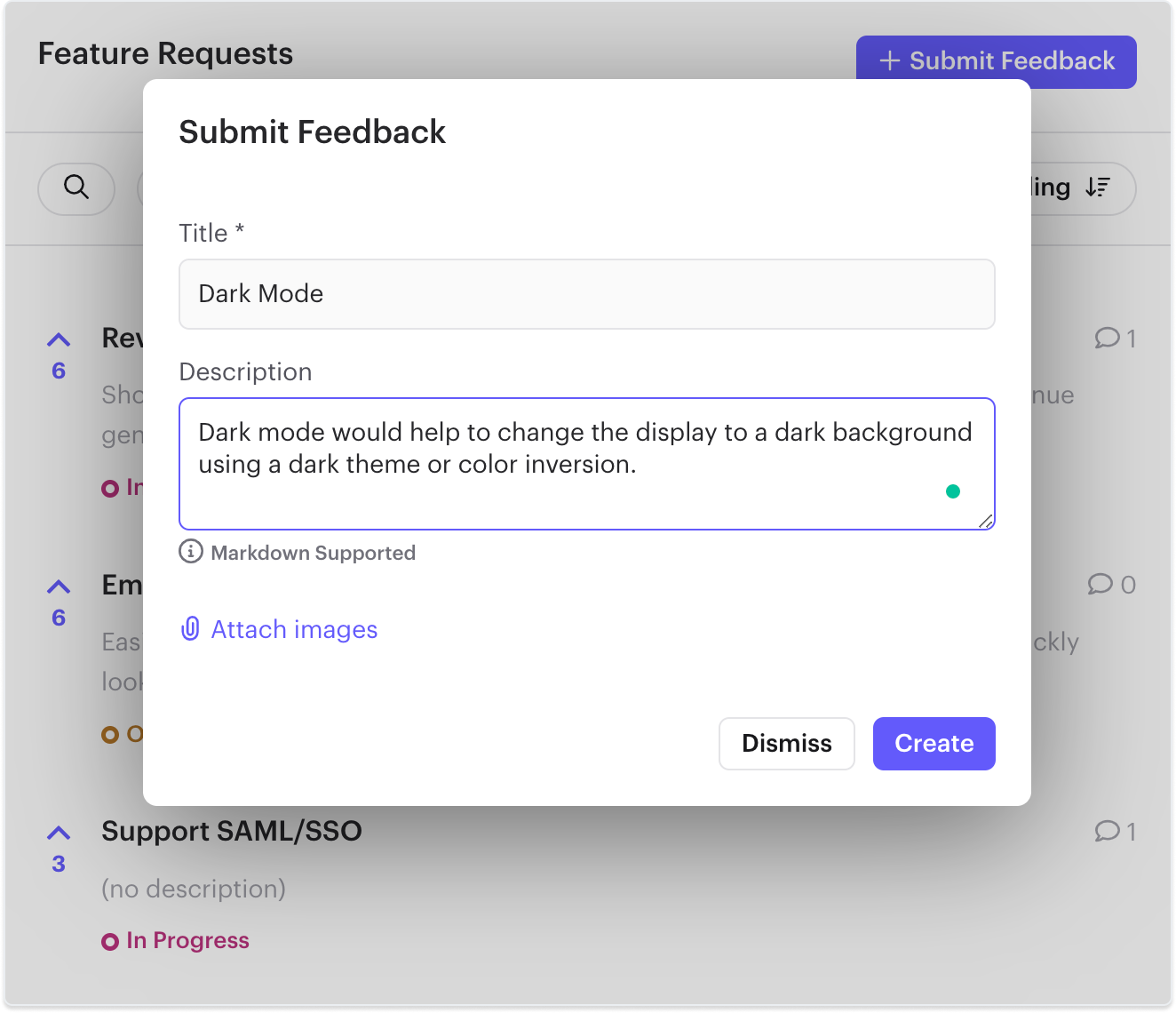
3. Reduce Risks: By identifying potential issues and user pain points early on, you can make necessary adjustments before the full-scale development begins, reducing the risk of costly changes later.
4. Improve User Experience: Prototyping and testing allow you to explore different design options and interactions, helping to create a better user experience and drive product adoption. It helps refine the product's design based on user interaction and customer feedback, not just assumptions.
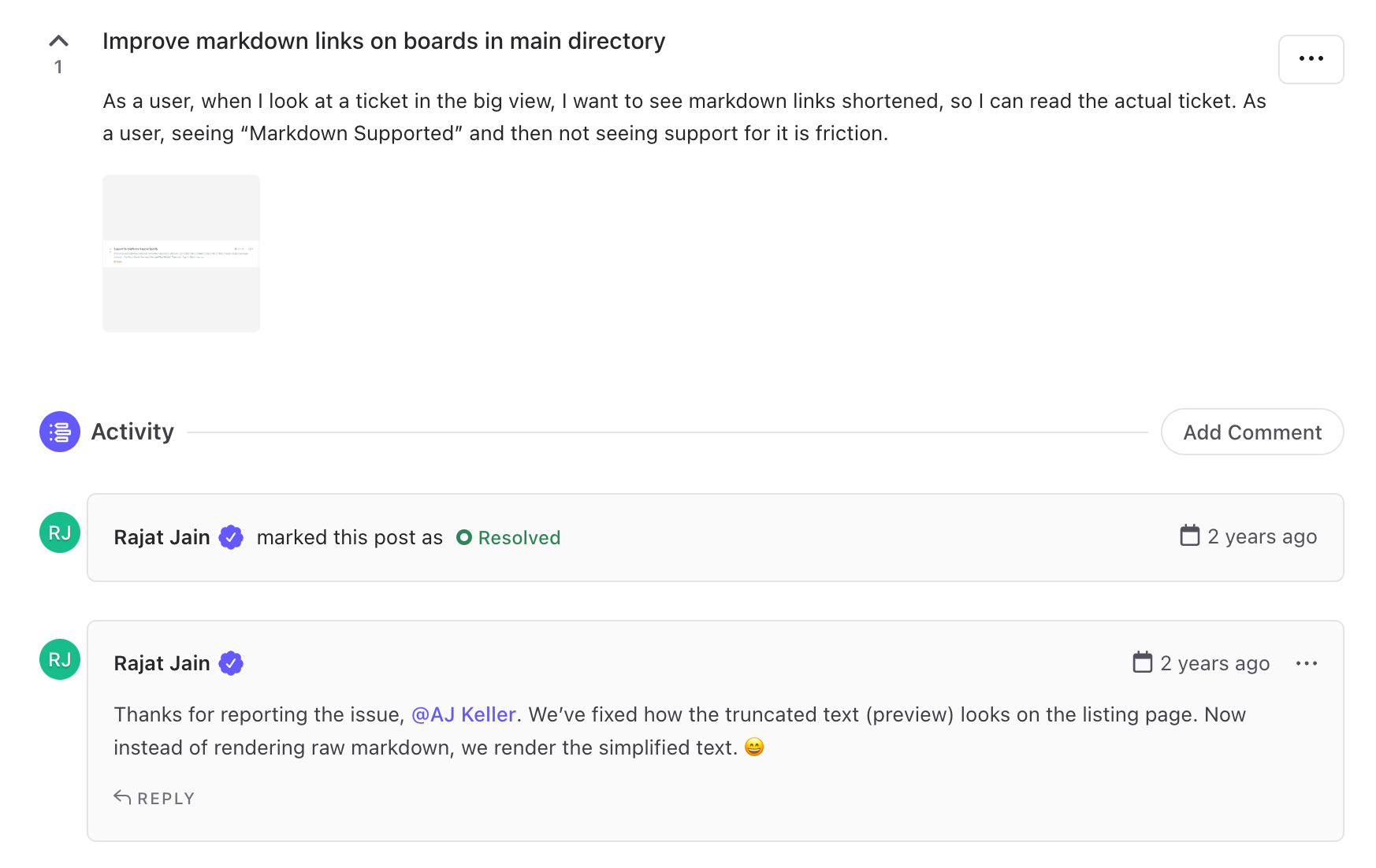
5. Stakeholder Communication: Prototypes can help communicate your ideas more effectively to stakeholders by giving them something tangible to interact with, also closing the feedback loop. It can help set the right expectations and gain buy-in.
6. Faster Iteration: Prototyping and concept testing support a fast iteration. Based on user feedback, teams can quickly make revisions and re-test, helping to rapidly converge on solutions and responses that meet user needs and expectations.
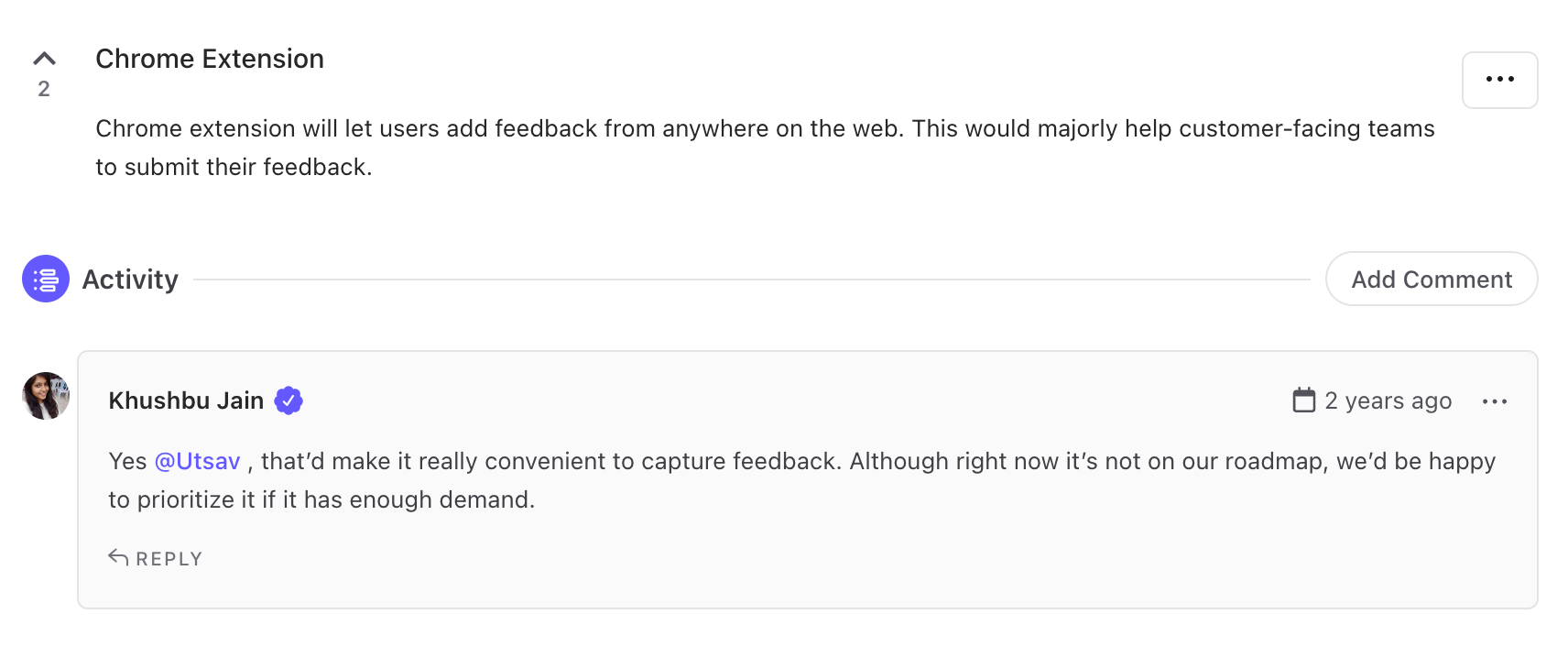
In summary, prototyping and concept testing can save time, money, and resources in the long run by ensuring that the product is user-centered and has been tested for potential issues before full development.
Leverage Continuous Product Discovery for Business Success
Product discovery is a complex yet rewarding process that underpins successful product management. Product managers can holistically understand customer needs, market dynamics, and product usability by leveraging various techniques, from customer interviews and feedback analysis to user journey mapping and testing. These insights pave the way for informed, data-driven decisions that shape products that genuinely resonate with users.
Remember, as a product manager, your role in product discovery is not a fleeting affair but a continuous endeavor that stretches across the product's lifecycle. By persistently focusing on learning and evolving, you ensure your product remains in tune with changing user needs and market trends, laying the groundwork for sustainable product success.
To help you in the product discovery process, it’s always good to have a feedback management tool to help you understand your users' journey and consistently strive to deliver value, organize feedback, and communicate new feature releases.
Incorporate customer feedback into your product discovery process:
- Set up a Customer Feedback System
- Collect Actionable Feedback from Customers and Teammates
- Analyze, Prioritize, and Categorize Feedback Data to Make Sense of It
- Act and Have a Specific Product Evolution Plan
- Announce New Features and Product Updates
With Rapidr, you can collect, analyze, and organize feedback and engage with customers as their feedback moves through the discovery process. Sign up for free and set up a complete customer feedback system to inform and enhance your product discovery process.
FAQs
Who Owns Product Discovery?
Product discovery is typically owned by the product manager, who is responsible for guiding the strategic direction of the product and ensuring that it meets both customer needs and business goals. However, it's important to note that product discovery is a collaborative process, and its success relies heavily on the involvement of a cross-functional team.
What are the Phases of Product Discovery?
Product discovery typically goes through several phases to help ensure a team builds a valuable and viable product that meets the users' needs. There are four phases of product discovery:
1. Learn & understand
This phase involves getting to know your users and their needs, often through user interviews, surveys, and market research. The goal is to understand who your users are, what they want, and why they want it.
2. Define & decide
Once you understand your users well, you define the problem your product will solve. This is often articulated as a problem statement or user story. It's crucial to keep this user-centric: focus on what the users need, not what the business or technology can do.
3. Ideate & prioritize
This phase involves brainstorming solutions to the problem statement you've defined. It's essential to encourage wide-ranging ideas and to consider many different possible solutions. Techniques like brainstorming, sketching, and even prototyping can be helpful here.
4. Prototype & test
Once you have a handful of potential solutions, you can create prototypes to help visualize and test them. Finally, you test your prototypes with actual users to gather feedback. This phase allows you to validate your ideas and ensure they solve the user's problem. Based on the feedback, you might return to the ideation or prototyping stages to refine your solution.
What are Product Discovery Tools?
Various tools can facilitate product discovery, helping you gain insight into user needs, identify opportunities, and validate your product ideas. Here are some helpful product discovery tools:
- Customer Interview Tools: Tools such as Zoom, Microsoft Teams, or Google Meet help conduct virtual customer interviews. Tools like Otter.ai can transcribe these interviews for analysis.
- Customer Survey Tools: SurveyMonkey, Google Forms, or Typeform can help you create surveys to gather feedback from a larger audience.
- Customer Feedback Tools: Rapidr, Trello, UserVoice, and Jira to help manage, collect, and analyze customer feedback, feature requests, and suggestions from users and teammates.
- Data Analytics Tools: Tools like Google Analytics, Mixpanel, or Amplitude can provide insights into user behavior on your website or app.
- User Testing Tools: Platforms like UserTesting or UsabilityHub allow you to conduct user tests and usability studies remotely.
- Competitor Analysis Tools: Tools like SEMrush, Ahrefs, or SimilarWeb can provide valuable data about your competitors and the market.
- Social Media Monitoring Tools: Platforms like Hootsuite, Brandwatch, or Sprout Social can help monitor social media for mentions of your product or related topics.
- Persona Creation Tools: Tools like Xtensio or UserForge can help create user personas based on your research.
- User Journey Mapping Tools: Tools like Miro, UXPressia, or Smaply can help you visually map out the user's journey with your product.
- Prototyping Tools: Tools like Sketch, Adobe XD, or Figma can be used to create low or high-fidelity prototypes of your product.
- Collaboration Tools: Tools like Slack, Microsoft Teams, or Asana can be used to collaborate and share insights during the discovery process.
- Customer Relationship Management (CRM) Tools: Tools like Salesforce or Hubspot help to manage customer interactions and data, providing valuable insights for product discovery.

